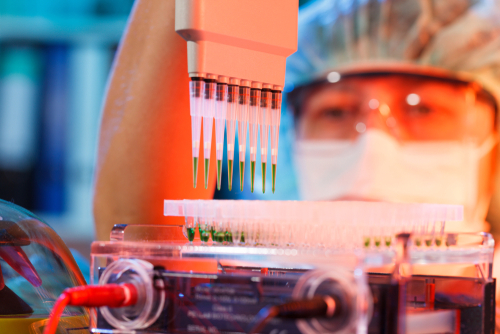Japanese Team Discovers Five New SH3TC2 Mutations Linked to CMT4
Written by |

Japanese researchers have identified five new mutations of the SH3TC2 gene that are involved in the development of Charcot-Marie-Tooth type 4 (CMT4).
Their findings, in a study titled “Clinical and mutational spectrum of Japanese patients with recessive variants in SH3TC2,” appeared in the Journal of Human Genetics.
Charcot-Marie-Tooth is a group of inherited diseases that affect peripheral nerve cells and the way these cells transmit information to the central nervous system. Depending on its disease characteristics, as well as biological and genetic features, it can be categorized into different subtypes.
Before the Japanese study, 12 genes, including SH3TC2, were implicated in the development of CMT4. This autosomal recessive form of the disease is linked to early onset and faster disease progression. An autosomal recessive form requires two copies of the mutated gene for someone to have symptoms.
Researchers at Kagoshima University conducted a genetic screen analysis of 1,483 unrelated patients diagnosed with CMT.
It revealed that nine patients had 10 recessive variants of the SH3TC2 gene. Five had never been reported. The researchers identified them as Tyr898fs, Tyr1182*, Ala595Glu, Leu571Pro, and Glu1164_Phe1169delinsHis.
In addition to these discoveries, the team identified a new variant of the SACS gene (Gln2251Lys) in one of these patients. It has been linked to early-onset Charlevoix-Saguenay ataxia (ARSACS), but the team could not relate the mutation to the development of that disease or CMT. Another study had identified other SACS variants in Brazilians that researchers had linked to the development of CMT-like symptoms.
Evaluation of nerve cell damage in these patients showed that seven had lost myelin, the membrane that protects nerve cells, and two had signs of damage to the axonal part of nerve cells.
The demyelinating CMT linked to SH3TC2 variants was found to be much more frequent in women than men. The primary symptoms of the disease were lower limb dysfunctions, such as leg weakness or movement problems, in six patients and scoliosis, or a spine deformity, in one patient.
As their disease progressed, these patients developed several other symptoms, including decreased pain sensitivity in the lower legs, lack of reflexes, foot deformities, hearing loss, and eye movement problemss. After the age of 50, five of the patients became wheelchair-dependent.
Regardless of whether they had the same or different mutations of SH3TC2, CMT4C patients displayed a broad spectrum of symptoms, the researchers wrote. “Although age of onset varied markedly in our patients, they developed a comparable” disease course, “and the majority lost their ambulance [ability to walk] around the age of 50,” they wrote.




